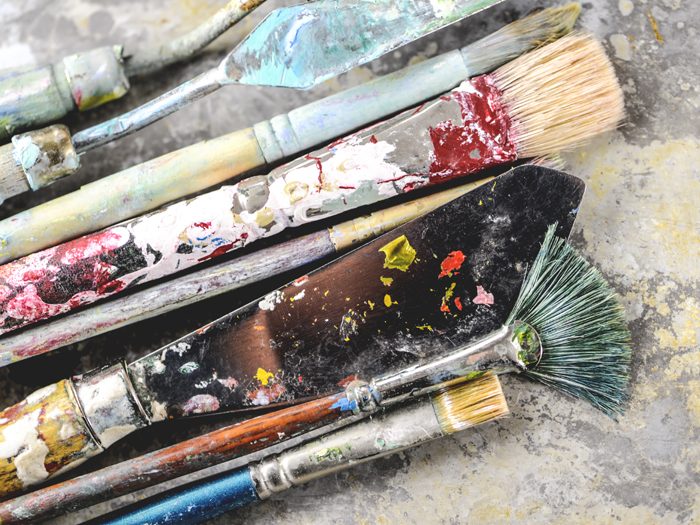7 Critical Risks Facing the Fine Arts Industry

Preserving art, culture and history is a costly enterprise as many museum owners know. Even if an exhibit doesn’t boast a Rembrandt or Abraham Lincoln’s hat, it can still cost a pretty penny to keep the art and sculptures safe and insured.
There are a number of growing challenges museums and other galleries have to be on top of if they want to protect their collections from the obvious risks — flood and fire — as well as less-thought-of but equally important risks — loan gaps and transit.
1) Flood
Water damage can be a scary thing, especially for museums. Books, paintings, sketches, portraits and photographs — these products are extremely susceptible to water damage.
In 2017, Hurricane Harvey unleashed 50 inches of rain on unsuspecting Houston, leaving behind an estimated $75 billion in total damages thanks to flood waters. In addition to homes and businesses, Houston’s Theater District took a big hit. The Wharton County Historical Museum and 20th Century Technology Museum were nearly covered in muddy flood waters.
Mark Schulze, technical director of the 20th Century Technology Museum, told the LA Times, “Wharton County (who owns the museum building) says it will not pay for repairs to make the building habitable again, and conventional occupancy insurance almost never covers flood damage. Preliminary estimates for full remediation of the existing building are on par or exceed the cost of building an entirely new building.”
2) Vandalism
It does not have to be a club-wielding, art-hating thug who takes down an invaluable work of art. Vandals come in all shapes and sizes, from protesters to disgruntled museum-goers, teenagers to those who think they’re being funny.
Paint, rocks, acid, knives and even lipstick have been known to cause damage to paintings and sculptures. Outdoor sculptures tend to take the brunt of defacement and cruelty as well.
One example, ‘The Little Mermaid,’ nestled on the beaches of Copenhagen, has been victim to not one, but two beheadings in the last 50 years. The first occurred in the mid-1960s as part of a political protest. The original head, which was sawed clean off, has never been found. The replacement head was decapitated in the 1990s, and though the culprits were never caught, they returned the mermaid’s head a month later anonymously.
3) Theft
An estimated 90 percent of all art theft involves inside personnel at the museum. Nearly $752.5 million worth of art was stolen in the U.S. in a five-year span. Forty percent of all art theft takes place in the UK, while 19 percent of theft occurs in the U.S.
The most vulnerable collections are stolen directly from private homes, making up 52 percent of all thefts. Only 10 percent of art theft occurs at art galleries and other similar facilities, like museums.
Though that’s a small percentage, museums should not skimp on their anti-theft security or insurance. Cultural property theft is the fourth largest crime category worldwide; it adds up to $3 billion to $5 billion each year.
4) Gaps in loan agreements
Museums and galleries often display artwork loaned out to them by private collectors or other museums. Sometimes, museums may sign an incoming loan agreement that asks them to take on more liability than their insurance policy covers, leading to gaps. If something were to happen, museums would be on the hook for damages.
Increasing temporary policy limits is one solution, though the trouble comes in when a museum’s curator doesn’t know there is a gap to begin with. Reviewing all insurance policies during any loan period is a priority when it comes to displaying a special exhibit.
5) Accumulation of values
It’s risky for museums to keep all their valuables in one location. If they split up their expensive artifacts and paintings, museums are spreading their risk and thinking proactively about preservation. That way, if one building or one hall suffers an incident, not all of the art is in the path of risk.
But many museums have massive values all in one building or even in one single gallery, which opens them to massive losses if something were to occur.
6) Fire
There’s no question that the items held in museums are vulnerable to burning. Even items held in fire proof cases are susceptible to smoke and ash damage. Art can’t be replaced, and restoration can be costly.
With volatile wildfire seasons growing and extending each year, museums need to keep an eye on both internal and external causes of fire risk.
Museums are starting to invest in other methods of fire-proofing outside installing smoke detectors and sprinklers inside the building. Getty Center in Los Angeles is a great example. It is a fortress of art, with travertine stone walls, a crushed stone roof and irrigation pipes used to saturate the earth in case of a fire outbreak.
7) Transit
Art is a privilege, not a right.
Museums and private art collectors generously loan out their Picasso’s, Van Gogh’s and Monet’s, because these precious pieces of art connect us to the history of the human race. These million-dollar pieces are sent back and forth all over the world just to be put on display.
But by allowing other galleries and museums to display the artwork they’ve purchased and kept safe, art collectors open up their possessions to the horrors of transportation risk.
Theft, accidents and weather top the list of transit issues, not to mention poorly packaged art bumping around in the back of a trailer or cargo plane. Those moving the precious material may not be adept in handling such goods, and human error can lead to some pretty catastrophic losses. Plus, the art needs to be warehoused in certain cases, and finding a storage unit that’s temperature controlled is imperative.
During transit, it is vital that careful evaluation, packing, shipping and documentation be used to prevent damage and loss. This is, by far, the riskiest activity art can undergo, so keeping track of every step of the process can help mitigate potential loss. &
Additional risks submitted by seven-time Power Broker® winner Mary Pontillo, national fine arts practice leader, SVP, Dewitt Stern — a Risk Strategies Company.











